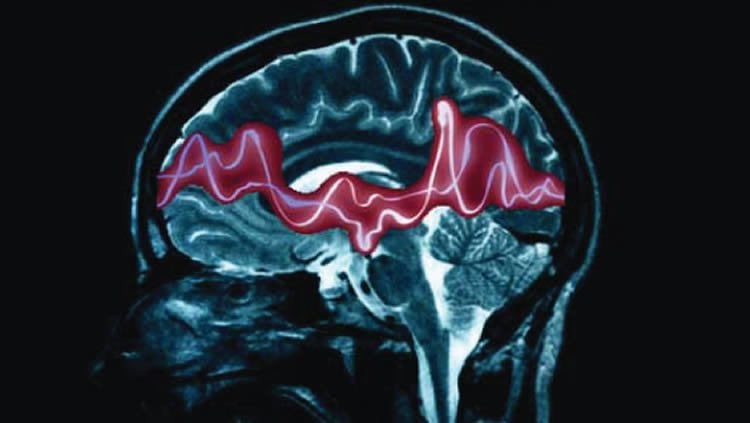A team of researchers from Sanford-Burnham and SUNY Downstate Medical Center has found that deficiencies in hyaluronan, also known as hyaluronic acid or HA, can lead to spontaneous epileptic seizures. HA is a polysaccharide molecule widely distributed throughout connective, epithelial, and neural tissues, including the brain’s extracellular space (ECS). Their findings, published on April 30 in The Journal of Neuroscience, equip scientists with key information that may lead to new therapeutic approaches to epilepsy.
The multicenter study used mice to provide the first evidence of a physiological role for HA in the maintenance of brain ECS volume. It also suggests a potential role in human epilepsy for HA and genes that are involved in hyaluraonan synthesis and degradation.
While epilepsy is one of the most common neurological disorders—affecting approximately 1 percent of the population worldwide—it is one of the least understood. It is characterized by recurrent spontaneous seizures caused by the abnormal firing of neurons. Although epilepsy treatment is available and effective for about 70 percent of cases, a substantial number of patients could benefit from a new therapeutic approach.

“Hyaluronan is widely known as a key structural component of cartilage and important for maintaining healthy cartilage. Curiously, it has been recognized that the adult brain also contains a lot of hyaluronan, but little is known about what hyaluronan does in the brain,” said Yu Yamaguchi, M.D., Ph.D., professor in our Human Genetics Program.
“This is the first study that demonstrates the important role of this unique molecule for normal functioning of the brain, and that its deficiency may be a cause of epileptic disorders. A better understanding of how hyaluronan regulates brain function could lead to new treatment approaches for epilepsy,” Yamaguchi added.
The extracellular matrix of the brain has a unique molecular composition. Earlier studies focused on the role of matrix molecules in cell adhesion and axon pathfinding during neural development. In recent years, increasing attention has been focused on the roles of these molecules in the regulation of physiological functions in the adult brain.
In this study, the investigators examined the role of HA using mutant mice deficient in each of the three hyaluronan synthase genes (Has1, Has2, Has3).
“We showed that Has-mutant mice develop spontaneous epileptic seizures, indicating that HA is functionally involved in the regulation of neuronal excitability. Our study revealed that deficiency of HA results in a reduction in the volume of the brain’s ECS, leading to spontaneous epileptiform activity in hippocampal CA1 pyramidal neurons,” said Sabina Hrabetova, M.D., Ph.D., associate professor in the Department of Cell Biology at SUNY.
“We believe that this study not only addresses one of the longstanding questions concerning the in-vivo role of matrix molecules in the brain, but also has broad appeal to epilepsy research in general,” said Katherine Perkins, Ph.D., associate professor in the Department of Physiology and Pharmacology at SUNY.
“More specifically, it should stimulate researchers in the epilepsy field because our study reveals a novel, non-synaptic mechanism of epileptogenesis. The fact that our research can lead to new anti-epileptic therapies based on the preservation of hyaluronan adds further significance for the broader biomedical community and the public,” the authors added.
Contact: Susan Gammon, Ph.D. – Sanford-Burnham Medical Research Institute
Source: Sanford-Burnham Medical Research Institute press release
Image Source: The image is adapted from the Sanford-Burnham Medical Research Institute press release
Original Research: Abstract for “Hyaluronan Deficiency Due to Has3 Knock-Out Causes Altered Neuronal Activity and Seizures via Reduction in Brain Extracellular Space” by Amaia M. Arranz, Katherine L. Perkins, Fumitoshi Irie, David P. Lewis, Jan Hrabe, Fanrong Xiao, Naoki Itano, Koji Kimata, Sabina Hrabetova, and Yu Yamaguchi in Journal of Neuroscience. Published online April 30 2014 doi:10.1523/JNEUROSCI.3458-13.2014






